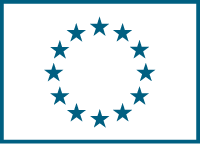High quality water recycling including thermal energy recovery in photo film and photo paper production
(WAHEPHO)
Date du début: 1 janv. 2003,
Date de fin: 1 janv. 2006
PROJET
TERMINÉ
Background
About 10% of the wastewater of the Fuji photo film and paper production facilities in Tilburg, Netherlands, contains silver. Currently a flotation process is used to treat the wastewater stream, but this technology has a number of negative environmental effects: a significant production of sludge and purified water containing COD (Chemical Oxygen Demand), chemicals and silver. Other photo industry facilities, both inside and outside the EU, face similar problems.
In order to improve this situation, Fuji has carried out research on an innovative combination of techniques to treat the wastewater stream. The combination consisted of (i) a membrane bioreactor, (ii) thermal energy recovery by means of heat pumps and heat exchangers and (iii) reverse osmosis. Fuji has achieved positive results with experiments on a pilot-scale of 1 m3/hr and is now ready to carry out a demonstration project on an industrial scale of 45 m3/hr. This combination of technologies has never been tested at this scale before.
Objectives
The objective of the project was to demonstrate on a large scale high-quality wastewater recycling, including thermal energy recovery, in photo film and photo paper production. A combination of techniques was to be used: membrane bio reactor (MBR), thermal energy recovery by means of a heat pump and heat exchangers, and reverse osmosis. Through appropriate dissemination activities, other industrial stakeholders were informed about the activities and results of the project. Following the project, the technology could be applied on a larger scale.
Expected results of the project include a reduction of energy use by 56.6%, sludge production by 60%, groundwater use and of wastewater produced by 85%, chemical use by 92%, thermal pollution by 93.3% and COD by 97%. The project also anticipated an improvement in the recovery of silver to nearly 100%.
Results
During the demonstration phase in 2004 and after the restart of the installation at the end of 2005, the project showed that the expected environmental benefits can be achieved. Moreover, economic benefits can be substantial. Circumstances have radically altered, however, due to the closing of one of the two factories supplying the water to the installation (which is now running at approximately 50% of its capacity). The water flows will need to be rebalanced and other waste water streams added in order to keep the system economically attractive.
Although other setbacks also occurred during the project â there were problems with the control of certain biological aspects and damage to concrete basins and membranes â resulting in delays to the schedule, tackling these problems has yielded valuable knowledge of operation and maintenance issues. The closing of one of the factories has helped achieve the reductions in most of the targeted areas, and reductions of CO2 and thermal pollution are in accordance with expectations.
The applied combination of techniques is innovative because the application of the MBR had previously been limited to low-quality re-use and end-of-pipe applications. It is also the first time that MBR has been combined with reverse osmosis and/or high-quality thermal energy recovery. The demonstration value of the project is high.
The technology is also potentially a cost-effective solution. Based on the results of the pilot research, Fuji expects to have recovered its investments in 4-5 years. With further optimisation of the process, this period could be reduced to 2.5-3.5 years. Fuji is now looking into the possible treatment of other wastewater streams of the plant with the installation and more MBR installations are planned for the Netherlands.
Accédez au prémier réseau pour la cooperation européenne
Se connecter
ou
Créer un compte
Pour accéder à toutes les informations disponibles
Coordinateur
- Hans NOTENBOOM
- (Netherlands)




